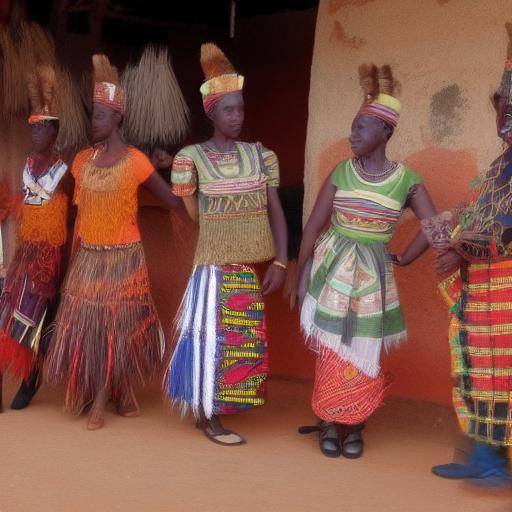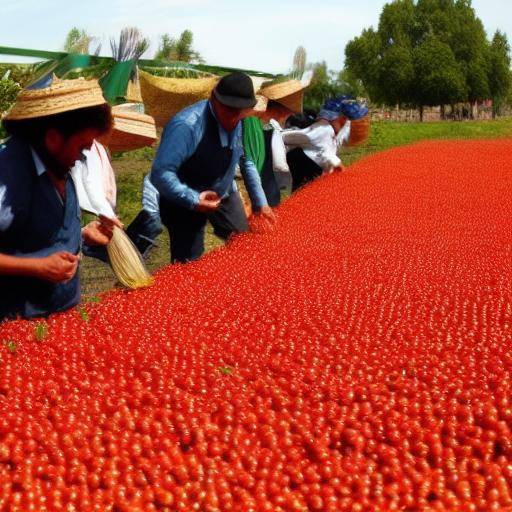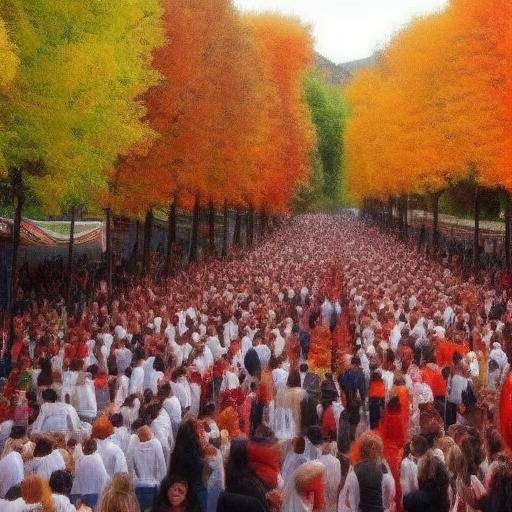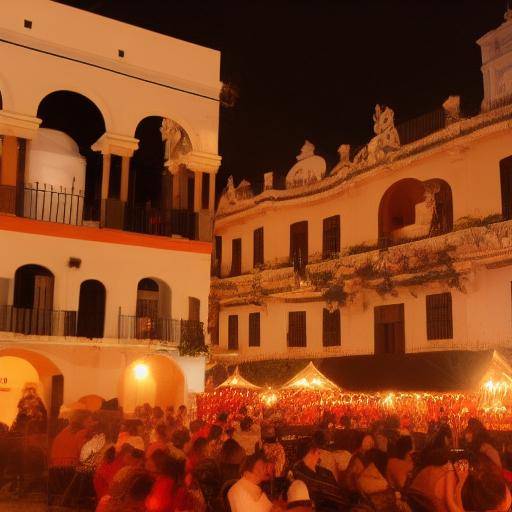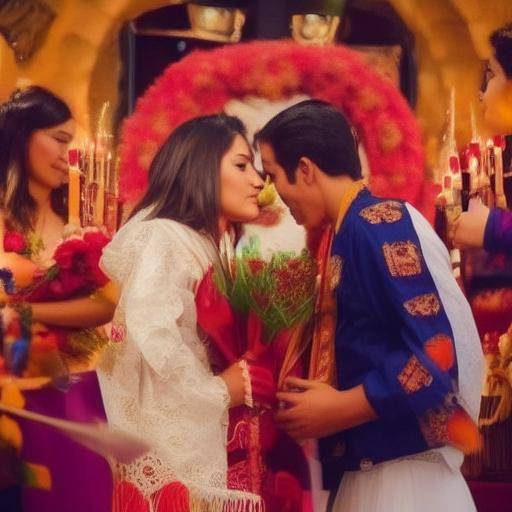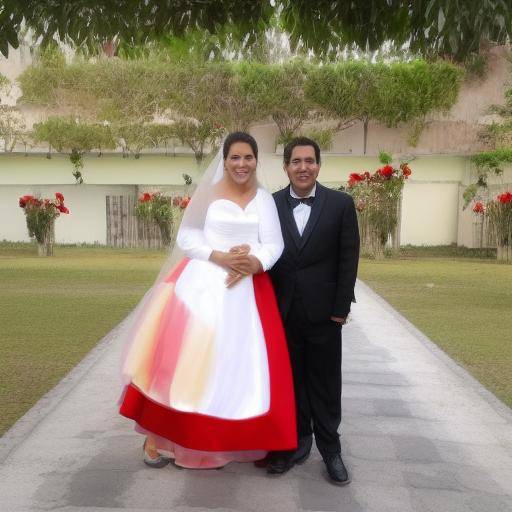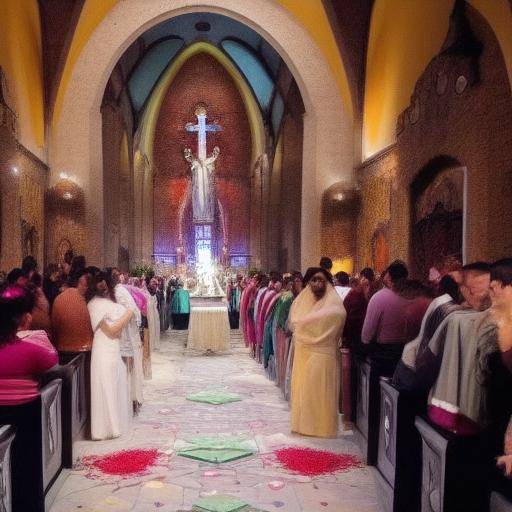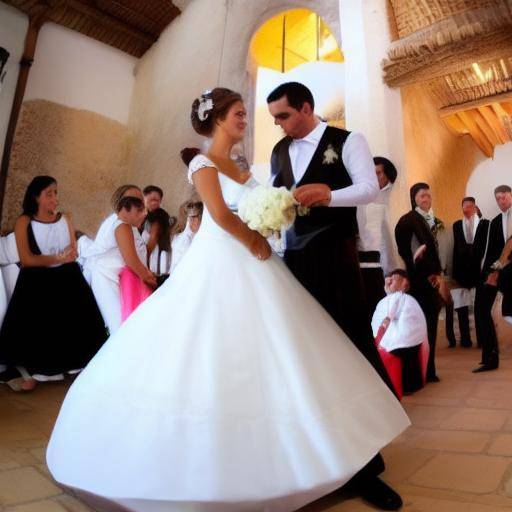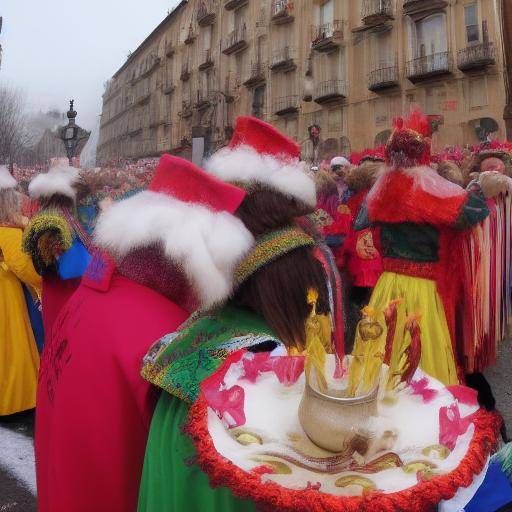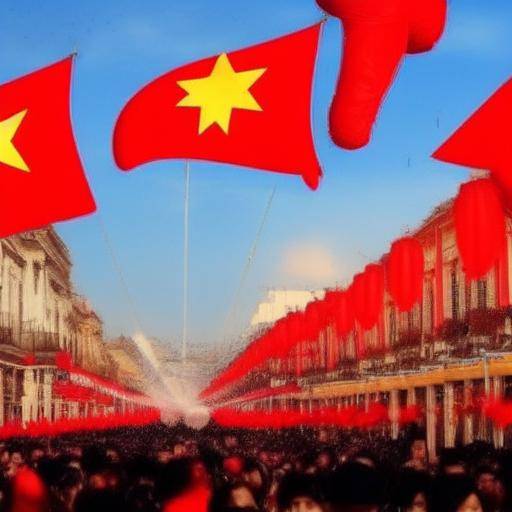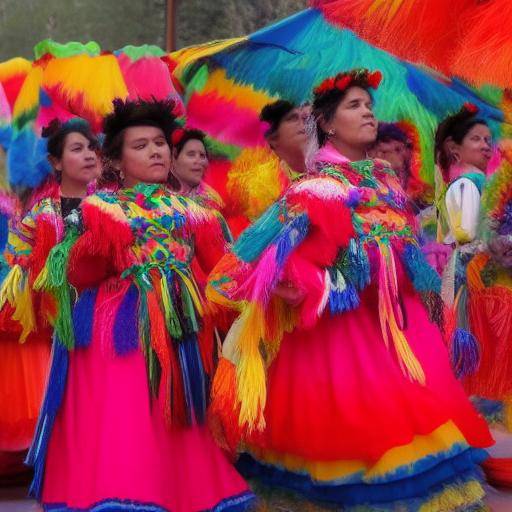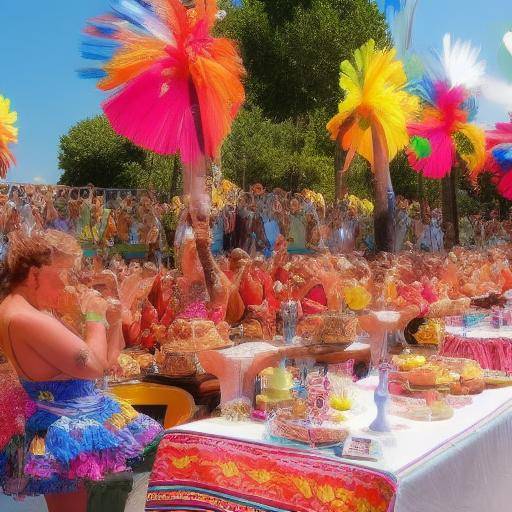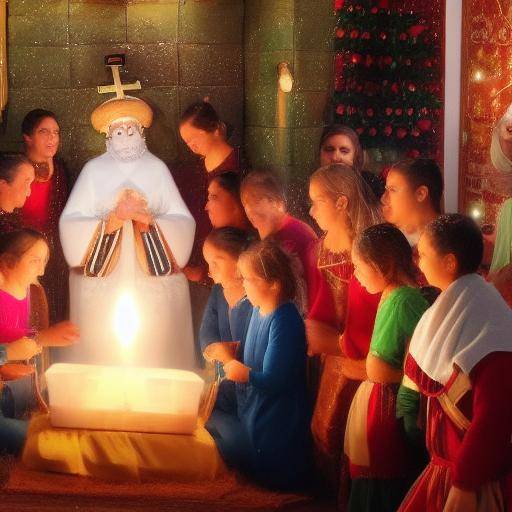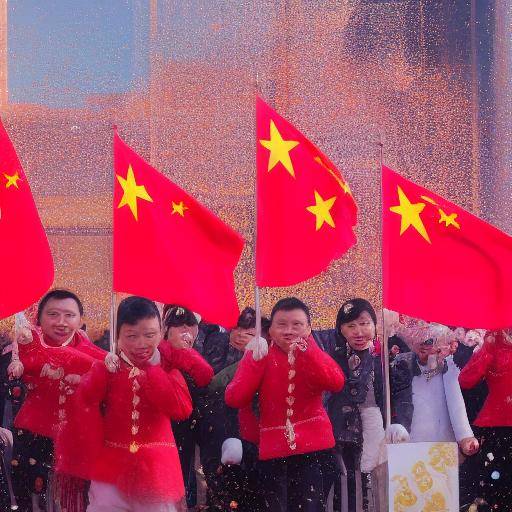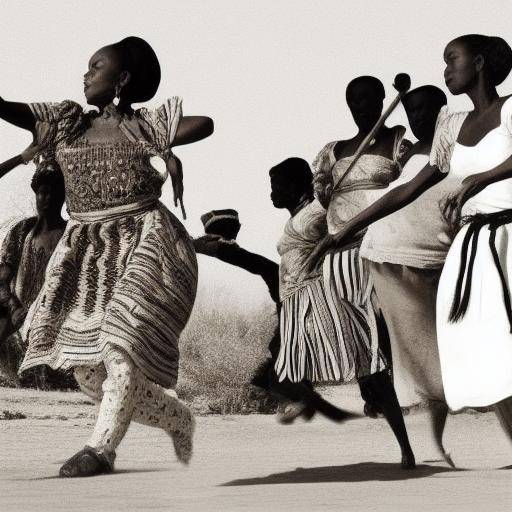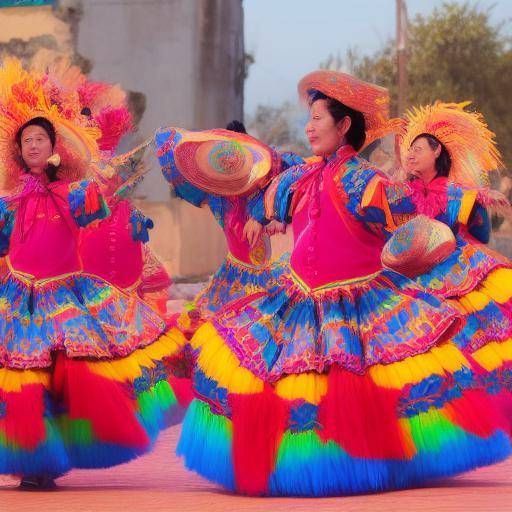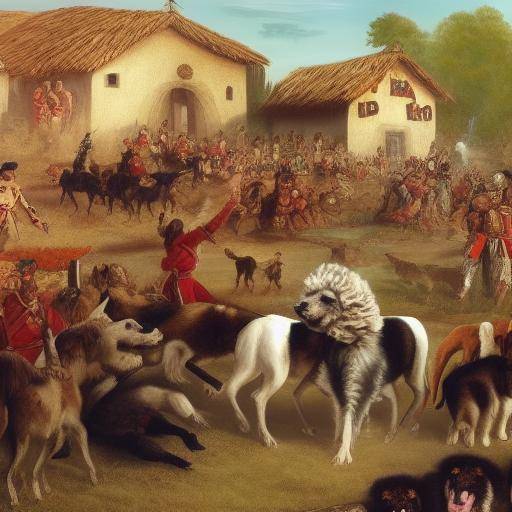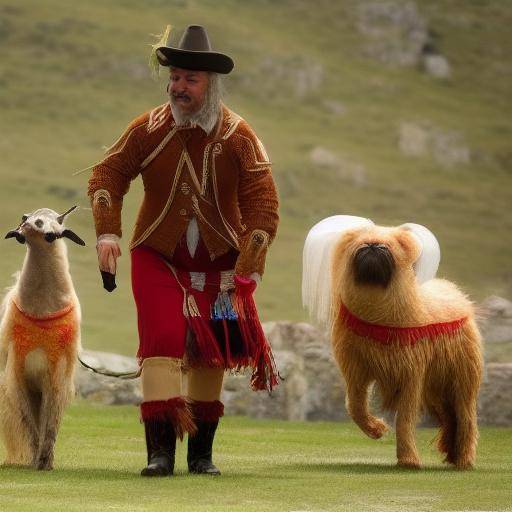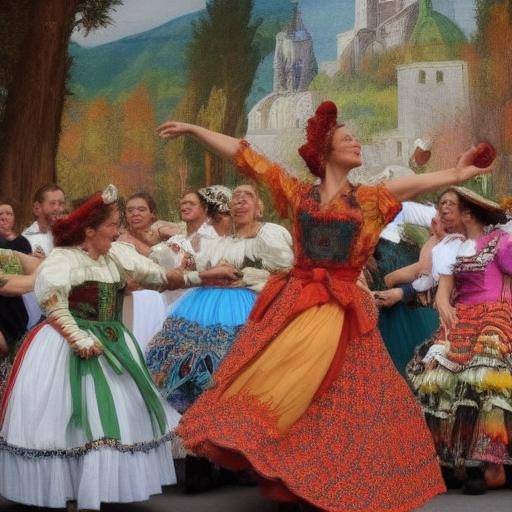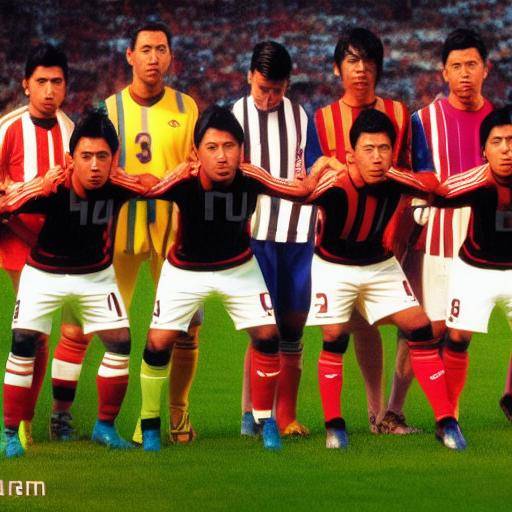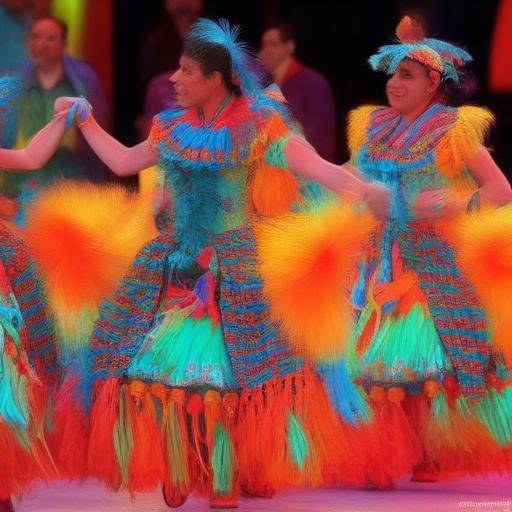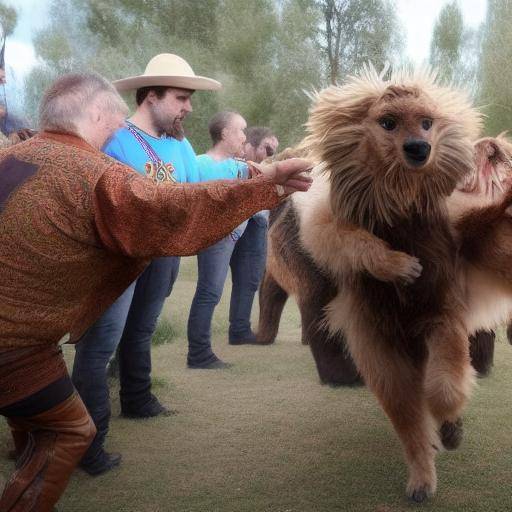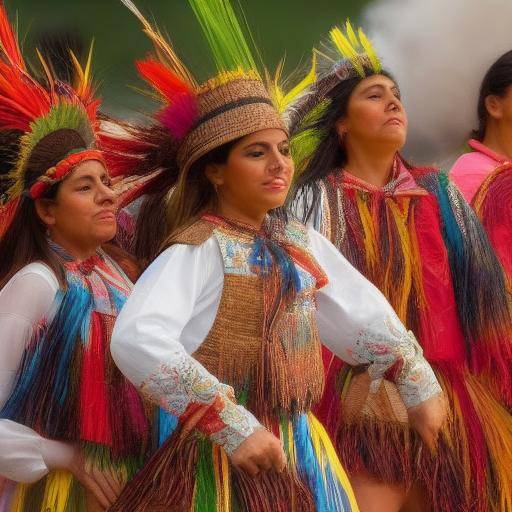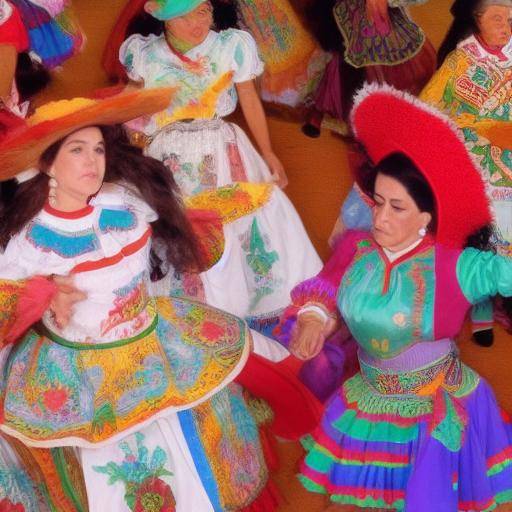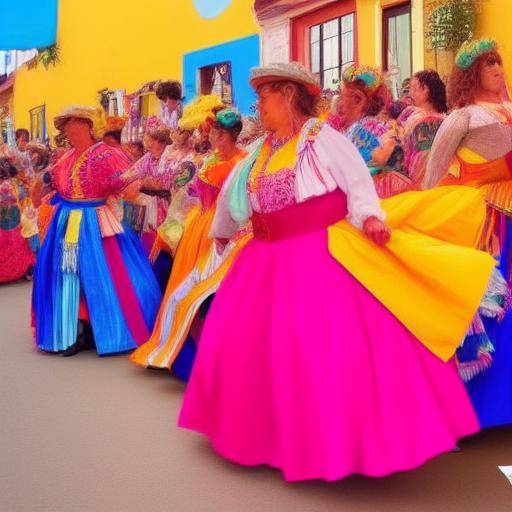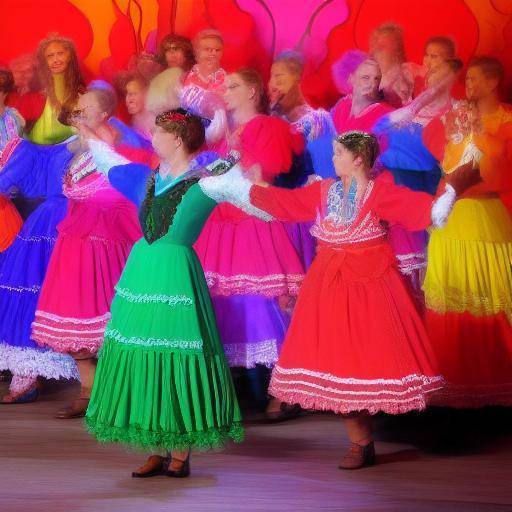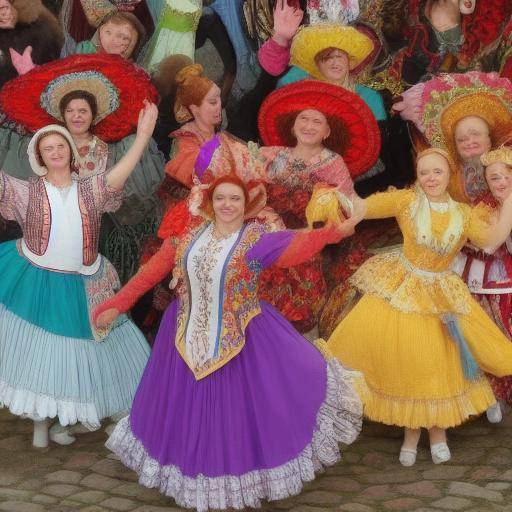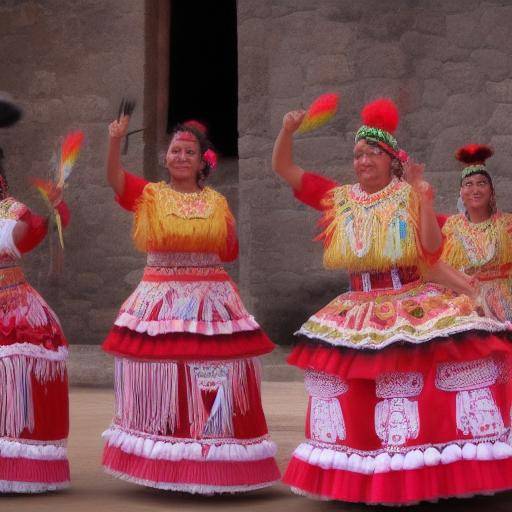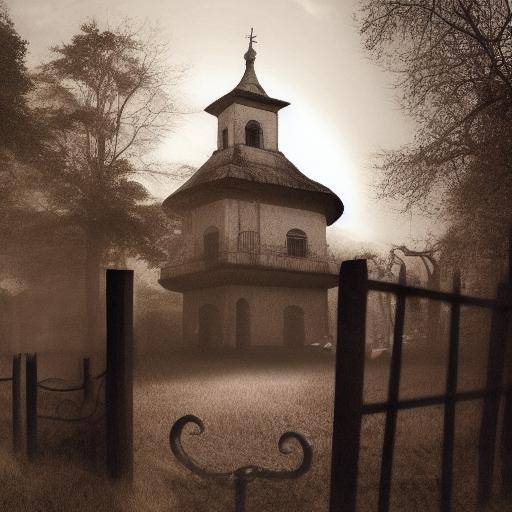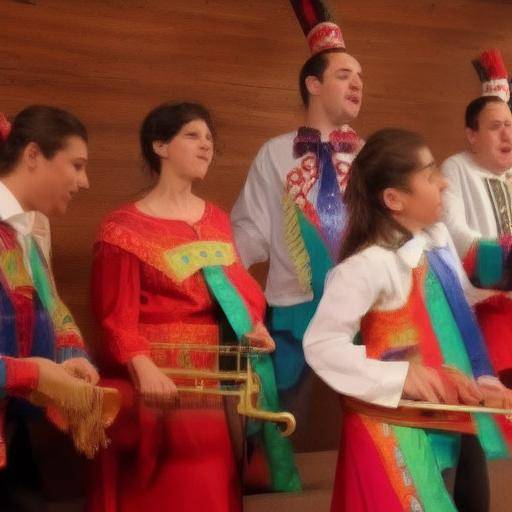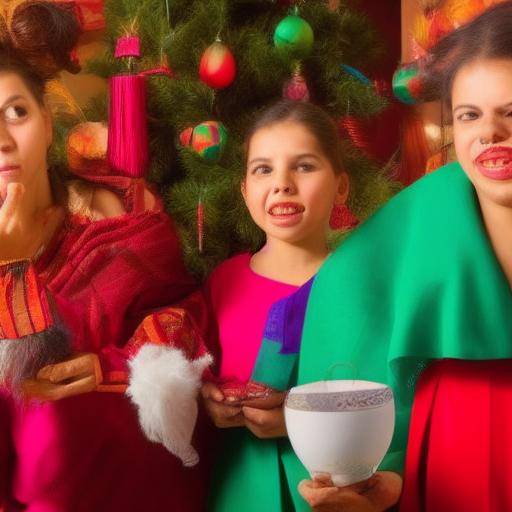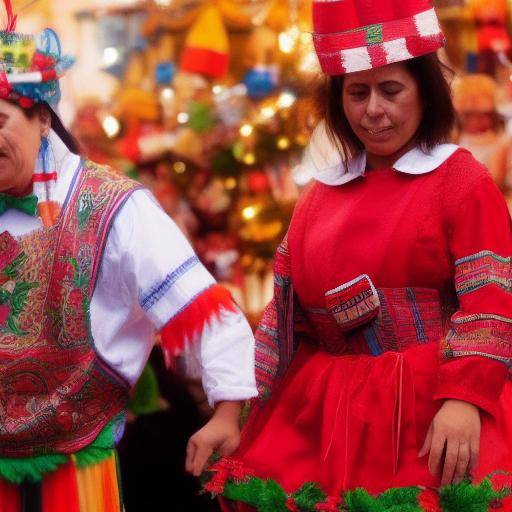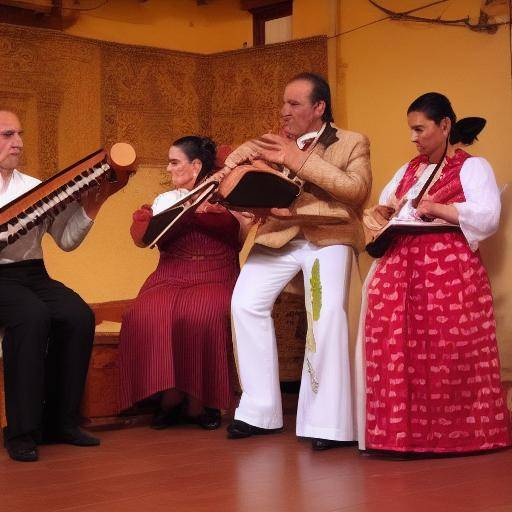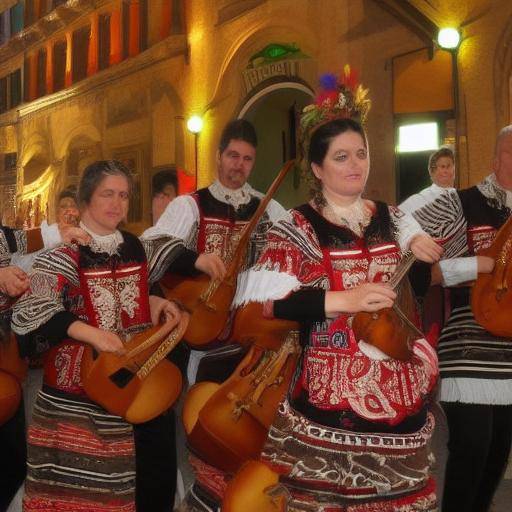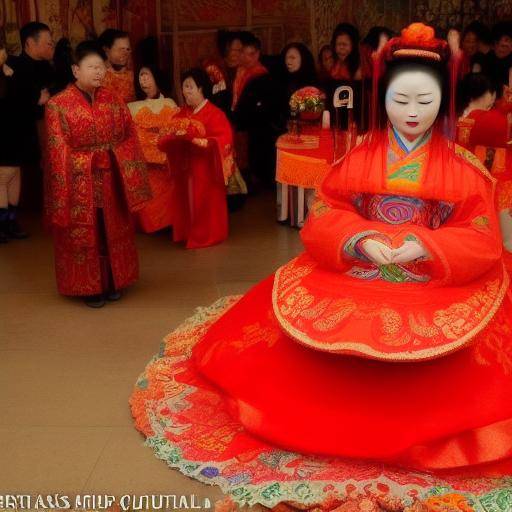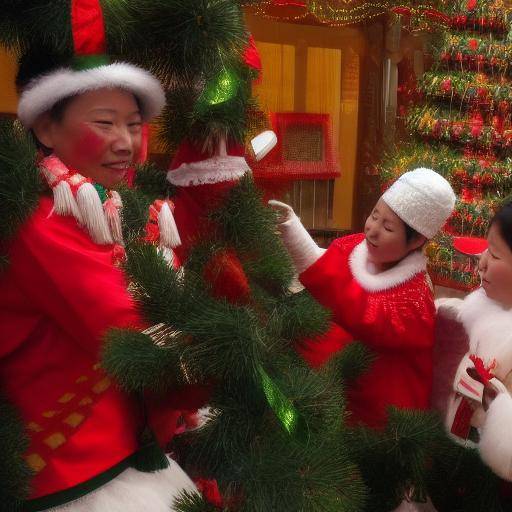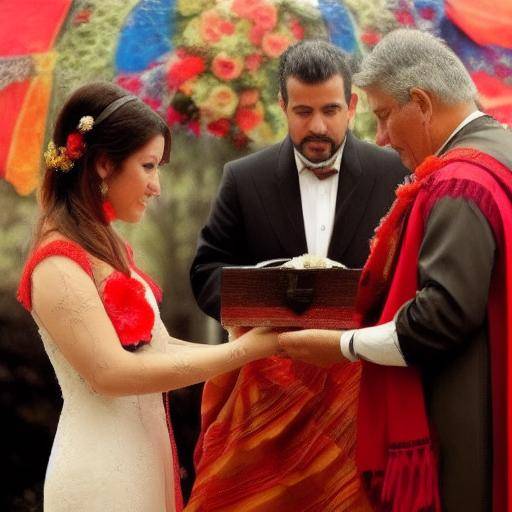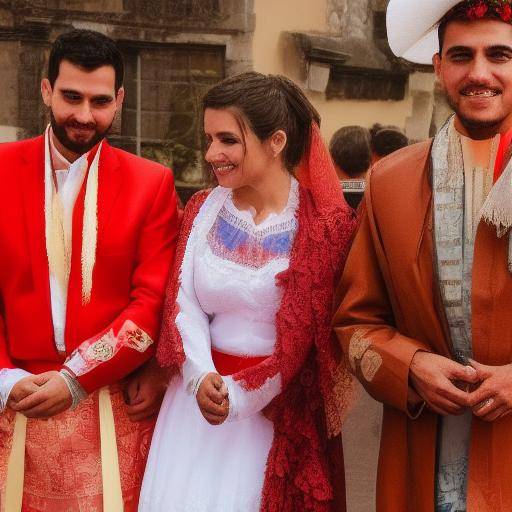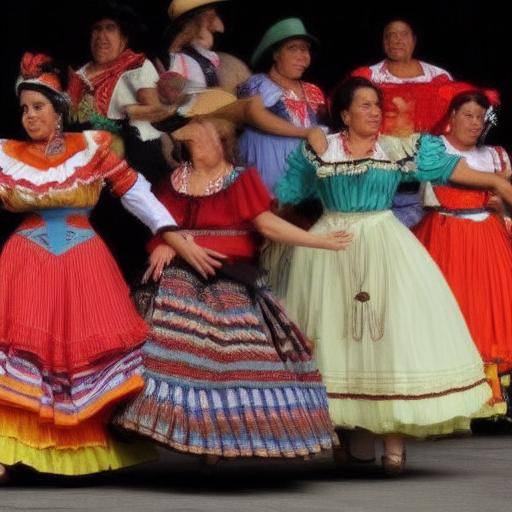
The South American continent is a crucible of cultures, traditions and customs, where folklore plays a fundamental role in shaping the identity of its peoples. Throughout the centuries, the impact of folklore has left a deep mark on South American customs, moulding the festivities, music, dance, gastronomy and beliefs of its inhabitants. In this article, we will explore how folklore has permeated and enriched South American customs, showing the immense cultural wealth of the region.
Introduction
Folklore, understood as the set of traditions, beliefs, customs and artistic expressions of a people, has an unequal influence on the daily life and identity of South American societies. From the majestic religious festivals to the energetic folk dances, folklore is the thread that unites the past with the present, preserving the cultural heritage and transmitting it from generation to generation.
Throughout this article, we will immerse ourselves in the history and impact of folklore in South American customs, exploring its evolution, its current manifestations, and its influence in areas as diverse as music, gastronomy, festivities and spiritual practices. We will also analyze the similarities and differences between the customs of various South American countries, revealing the richness and cultural diversity that characterize the region.
History and Background
The folklore in South America has its roots in indigenous, European and African traditions, which intertwined in a unique way during the time of conquest and colonization. The original peoples contributed their beliefs, ceremonies and mythologies, which merged with the customs brought by the Spanish and Portuguese colonizers, as well as with the cultural expressions of the African slaves.
South American folklore has experienced constant evolution over the centuries, adapting to socio-political changes and maintaining its relevance in the daily lives of communities. The traditional festivities, such as the Carnival of Rio de Janeiro, the Feast of the Virgin of the Candelaria in Peru, or the Diablada in Bolivia, are palpable examples of how folklore has endured over time, enriching local customs and projecting South American identity to the world.
In addition, the history of folklore in South America is marked by significant milestones, such as the diffusion of folk music, the revitalization of traditional dances and the preservation of ancient arts and crafts. These aspects have helped to consolidate the importance of folklore in everyday life and to strengthen the sense of belonging of the South American communities.
Analysis in Deep
The impact of folklore on South American customs is manifested in various spheres, from music and dance to gastronomy and popular beliefs. Folk music, with its vibrant rhythms and lyrics that tell stories of everyday life, plays a central role in the cultural expression of the region. The use of indigenous instruments, such as quena, charango or zampoña, gives South American folk music a unique identity, reflecting the ethnic and cultural diversity of the continent.
Likewise, folkloric dances constitute an artistic and social manifestation of great importance in South America. From the sensuality of Argentine tango to the vitality of Colombian cumbia, folkloric dances reflect the history and traditions of each people, transmitting a cultural legacy that lasts in time.
Gastronomy, another fundamental pillar of South American customs, is also impregnated with folkloric elements. emblematic dishes such as ceviche, arepa, asado or ají de gallina are examples of how folklore has influenced the culinary of the continent, merging indigenous ingredients with European and African cooking techniques. These culinary delights not only satisfy the palate, but also tell stories of tradition, mestizaje and root to the earth.
In addition, popular beliefs and religious festivities reflect the influence of folklore in South American spirituality and cosmovision. The veneration of the patron saints, the pilgrimages, the ceremonies of thanks to the Pachamama, and the feasts in honor of indigenous divinities are expressions of the interconnection between the sacred and the profane, in which the ancestral traditions intertwine with the religious faith.
Comprehensive review
The impact of folklore on South American customs is not only current, but it continues to generate new manifestations and revitalize traditions. The rise of contemporary folk music, the inclusion of folklore elements in cutting-edge artistic productions, and the valuation of traditional crafts as identity expressions, are examples of how folklore continues to permeate the daily lives of South Americans.
In this regard, folklore also represents an invaluable asset in terms of cultural tourism and sustainable development. Traditional holidays attract national and international visitors, generating economic opportunities and promoting the conservation of cultural practices. Likewise, community tourism, which allows travelers to immerse themselves in the richness of folklore and local customs, represents a powerful tool for cultural exchange and appreciation of diversity.
Comparative analysis
While folklore resonates vibrantly in all South American countries, it is interesting to observe the differences and similarities that characterize the customs of each region. For example, in Andean countries, such as Peru, Bolivia and Ecuador, religious festivities are impregnated with indigenous elements, such as scissor dances or rituals of gratitude to the earth. In contrast, in countries such as Argentina, Uruguay and Paraguay, tango and milonga are emblematic cultural expressions that enrich local customs.
The ethnic and cultural diversity of South America is also reflected in the multiplicity of languages, dialects and folkloric manifestations, enriching the cultural heritage of the region and showing the richness of ancestral heritage.
Practical Tips and Accessible Recommendations
For those who wish to enter the fascinating world of South American folklore, here are some practical tips:
- Participate in traditional festivities: Living in the first person folk festivals allows you to immerse yourself in the authenticity of local customs, interact with their protagonists and understand the importance of folklore in cultural identity.
- Learn to dance a folk dance: Whether it's the Argentine tango, the Brazilian samba or the Chilean cueca, learning to dance a folk dance is a way to connect with the festive spirit and the sensuality of South American folklore.
- Taste typical dishes: Gastronomy is a fundamental aspect of South American folklore. Experience the flavors and aromas of traditional cuisine, enjoy culinary diversity and discover the story behind each dish.
Industry Reflections and Expert Reviews
In the words of the ethnomusicologist Ana María Ochoa Gautier: "The folklore is not static; its vitality lies in its capacity of adaptation and renewal. It is the reflection of society in constant transformation, expressing its joys, its pains, its aspirations and its struggles."
This reflection highlights the relevance of folklore in social identity and the need to understand it as a dynamic phenomenon that evolves in tune with society. Experts on cultural tourism, such as anthropologist Alejandro Grimson, also underline the importance of preserving and disseminating folkloric heritage as a key asset for strengthening communities and promoting intercultural dialogue.
Case Studies and Real Life Applications
An eloquent example of the impact of folklore on South American customs is the Carnival of Oruro, in Bolivia, declared an Intangible Cultural Heritage of Humanity by UNESCO. This festival, which combines religious elements, traditional dances and artistic expressions, represents the synergy between the indigenous and the Catholic, showing the vitality of folklore as a vehicle of social cohesion and identity preservation.
Another highlight is the influence of folklore in contemporary music, where artists such as Mercedes Sosa, Violeta Parra or Caetano Veloso have incorporated folklore elements into their compositions, promoting the recognition and revaluation of South American cultural roots globally.
Future Trends and Predictions
In the context of globalization and the boom of technology, South American folklore is expected to continue to conquer new spaces, adapting to contemporary dynamics and projecting the richness of regional customs to wider audiences. The momentum of sustainable tourism projects, the promotion of the creative economy and the support of cultural entrepreneurship are trends that will continue to strengthen the role of folklore as an engine for development and social cohesion in South America.
Conclusions
The impact of folklore on South American customs is a vibrant testimony of the cultural diversity and heritage wealth of the region. Through music, dance, gastronomy, festivities and beliefs, folklore has woven a mantle of identity that unites South American peoples, celebrating collective memory, popular creativity and the transcendence of traditions.
Folklore is not only an ancestral legacy to preserve, but also an inexhaustible source of inspiration and vitality, able to dialogue with contemporary challenges and project to the future the very essence of South American identity.
Frequently asked questions
How has South American folklore influenced other cultural manifestations, such as literature and cinema?
South American folklore has served as a source of inspiration for numerous writers, filmmakers and visual artists who have portrayed their myths, legends and traditions in literary works, films and artistic expressions. For example, the work of Gabriel García Márquez, with its magical realism, is nourished by folkloric and ancestral elements that reveal the Latin cosmovision. Similarly, films such as "The Secret of Their Eyes" (Argentina) or "The Scared Tit" (Peru) explore folkloric and coastal issues with great international success.
What is the role of folklore in building local and national identities?
Folklore plays a key role in building local and national identities by rooting in society a sense of belonging, rooting and historical continuity. Through its manifestations, folklore exalts the particularities of each region and strengthens the feeling of collective identity, contributing to social cohesion and the pride of belonging to a community.
What is the importance of folklore in the education and transmission of values?
Folklore enriches education by offering new generations a privileged window to understand the history, customs and social worldview of their ancestors. In addition, through its narratives, folklore conveys values such as solidarity, respect for nature, integration, and the celebration of diversity, promoting critical awareness and appreciation for the cultural wealth of South America.
What initiatives are being carried out to preserve and promote South American folklore?
Various governmental, social and cultural initiatives are working on the preservation and promotion of South American folklore. This includes the creation of centers of research and dissemination of folklore, the support of festivals and folklore meetings, the inclusion of folklore in educational plans, and the development of cultural tourism projects that value folkloric expressions as heritage assets.
How can I contribute to the preservation of South American folklore?
Contributing to the preservation of South American folklore is possible through concrete actions, such as participating in folk festivals, supporting local artisans and artists, spreading traditional music and dances, and promoting respect and appreciation of folkloric expressions in society. Likewise, responsible tourism and conscious consumption of folk products contribute to preserving and enhancing these cultural manifestations.
What impact does folklore have on local economy and development?
Folklore has a significant impact on the economy and local development, generating employment in sectors such as tourism, crafts, gastronomy and the cultural sector in general. The folklore festivities, the artistic productions inspired by folklore, and the appreciation of ancestral knowledge and practices contribute to the economic dynamism of the communities and to the strengthening of cultural identity as a factor of sustainable development.
How could we promote the integration and exchange of folkloric expressions among South American countries?
The promotion of the integration and exchange of folkloric expressions among the South American countries entails the holding of meetings, festivals and cultural programs that foster collaboration and intercultural dialogue. In addition, support for the mobility of artists, the dissemination of folk productions in international spaces, and cooperation in research and dissemination of folklore are key strategies for strengthening cultural ties and promoting South American diversity in the world.
In conclusion, the impact of folklore on South American customs is a phenomenon of extraordinary wealth and complexity, rooted in history, mestizaje, and cultural diversity. From music to gastronomy, folklore remains an engine of identity, social cohesion and development in the region, projecting towards the future the inexhaustible vitality of the South American cultural heritage.

